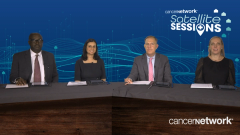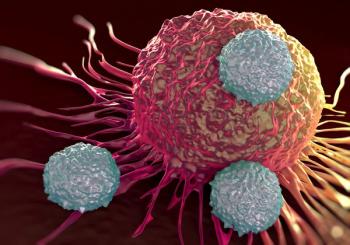
Unmet Needs and Future Perspectives on Treating Patients With Multiple Myeloma
Concluding their comprehensive discussion on treating patients with multiple myeloma, the expert panel discusses unmet needs and looks to the future of treatment.
Episodes in this series

Transcript:
Peter Voorhees, MD: Before we close, I’d just like to get some perspectives from the panel as far as unmet needs and future perspectives for the treatment of patients with newly diagnosed and relapsed refractory multiple myeloma based on what we discussed tonight. Kwabena, I’ll start with you.
Kwabena Osei-Boateng, MD: I haven’t heard anything about the patients with plasma cell leukemia, for example. That would be an unmet need. There are a whole lot of options, but the best way to sequence them is still [unknown], especially when you get into the CAR [chimeric antigen receptor] T-cell therapy and the BiTEs [bispecific T cell engagers]. I wouldn’t call it an unmet need, but there’s certainly more investigating that needs to happen to help guide the way we treat patients. There’s always an unmet need to find better ways for high-risk patients.
Peter Voorhees, MD: To your point, plasma cell leukemia would be considered an ultra–high-risk scenario. And to my point earlier from the MASTER and GRIFFIN trials, those patients who had 2 high-risk genetic abnormalities clearly did not do as well as those who had 1 and 0. In fact, those who had 0 and 1 did equally well. Those with 2 high-risk cytogenetic abnormalities, we definitely need to be doing better in that group of patients. I completely agree with you, and I completely agree with the need to better understand how to optimally sequence these therapies. Amy?
Amy Soni, MD: …Just in the 7 years that I’ve been practicing, I’ve seen practice patterns change and really excellent treatment options [be introduced] for our patients. It’s an exciting time in myeloma. It was great to learn more about the CAR T and bispecifics today. And so I think there’s less unmet need in myeloma compared with other disease states. For my patients, maybe [we need] room in the inpatient setting to get their transplants earlier, and eventually to get CAR T sooner, that sort of thing, is hopefully something that’ll be expanded on.
Peter Voorhees, MD: Absolutely. Reed?
Reed Friend, MD: I definitely agree with those points that you all brought up. I really like the exploring more into MRD [minimal residual disease] and seeing when we can hold therapy. A lot of patients know this is a lifelong treatment. So is there that patient population that we can be holding and giving them a treatment break? In addition to that, the CAR T and bispecifics, how old is too old? How can we better use these drugs, especially in our frailer [patients] who maybe aren’t getting transplanted? Those are things that would be great to look into.
Peter Voorhees, MD: I completely agree. For the frailer patients in CAR T-cell therapy, there are a lot of factors to consider, including the burden of disease going into the process. Because as I mentioned before, I think those with a low burden of disease actually do quite well. There may be an opportunity to do CAR T-cell therapy and select patients who are frailer. I would completely agree with that. And then the use of MRD testing to guide clinical decision-making. We have ongoing phase 3 studies that are looking at de-escalation of therapy for those who are MRD negative, escalation of therapy for those who are MRD positive, and the results of those studies will help inform whether we can use MRD testing to guide how we optimally treat our patients.
With that, I just want to thank you all for joining us tonight to talk about newly diagnosed and relapsed/refractory multiple myeloma. I’d like to thank my panelists for joining me tonight to discuss these rapidly evolving treatment practices for these patients. And with that, we wish you a good night and take care.
Transcript is AI-generated and edited for clarity and readability.
Newsletter
Stay up to date on recent advances in the multidisciplinary approach to cancer.



















































































